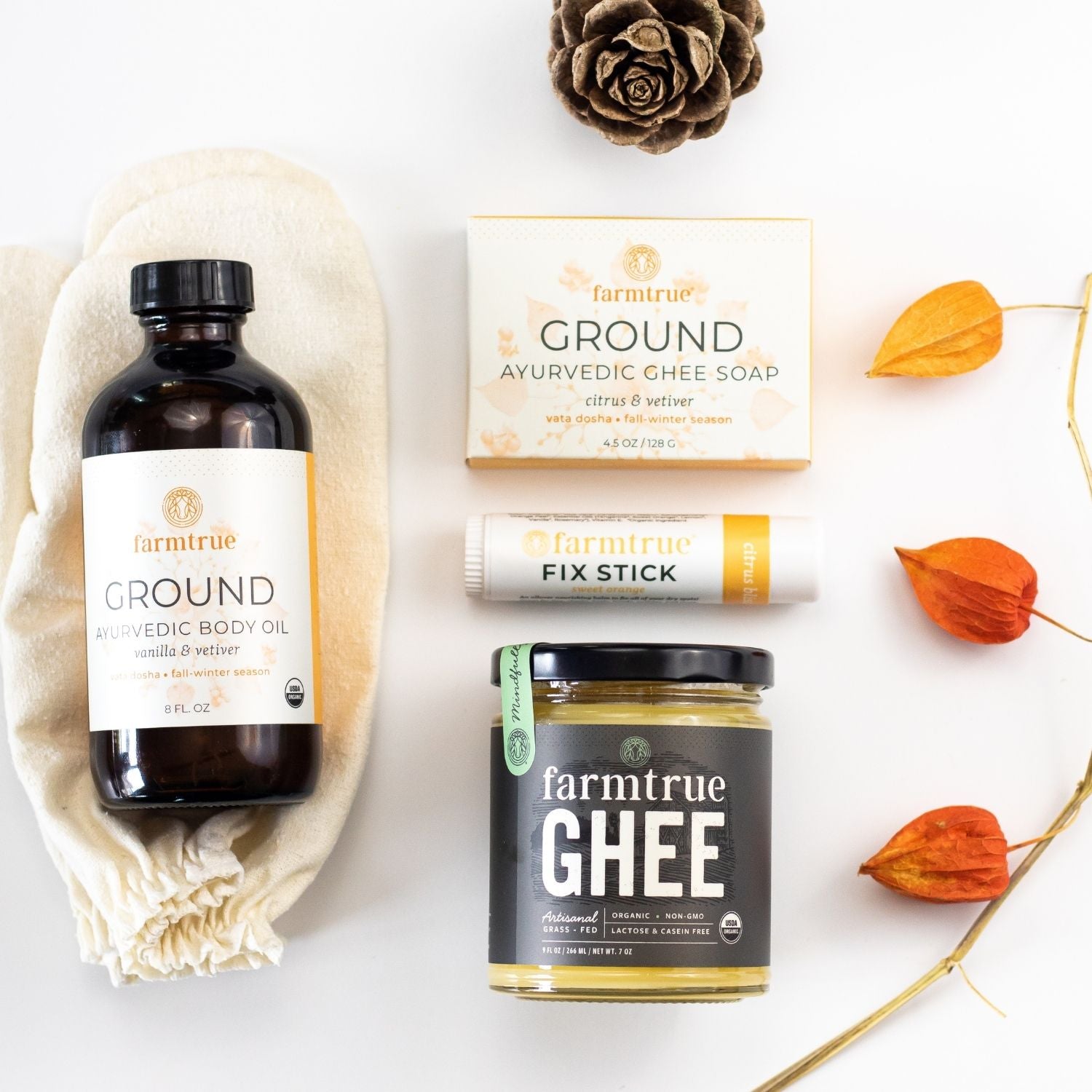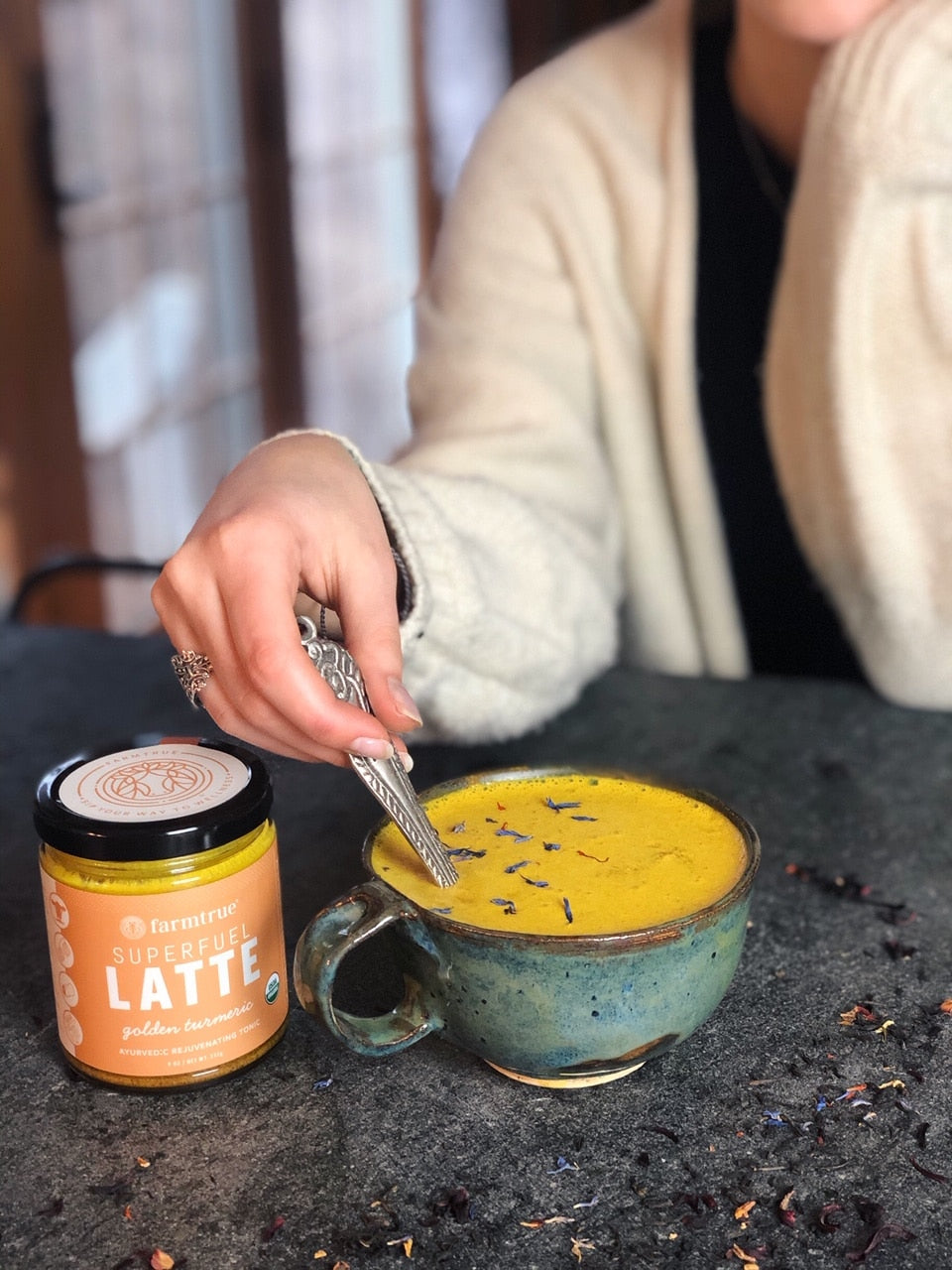
What is an Ayurvedic diet?
Keto, paleo, whole30, vegetarian, vegan, Atkins, south beach… the list continues on how many types of “diets” exist in the world. One of the main questions we receive is: what is an Ayurvedic diet? We’ll break it all down for you here.
What is an Ayurvedic diet?
One common theme in mainstream diets is the restriction or elimination of either fats, proteins, or carbohydrates. We need all three nutritional building blocks and restricting any of them could lead to an imbalanced nutritional diet. Ayurveda recognizes we need all three in different amounts at different times in our lives, depending on body type. Overall, an Ayurvedic diet is one that meets your individual needs in relationship to the season of nature that you are in. So, how do you implement an Ayurvedic diet? Follow our approach:
Eat Mindfully
Mindful eating is an overlooked practice as it is an essential way to relax the nervous system and in turn support the digestive system in doing its job well. When we take the time to smell our food, to notice the colors, textures and taste of our food, our gut and brain can communicate more easily opposed to being distracted watching TV or listening to the news or even driving! When was the last time you sat down at a table for your meal?
Eating in a calm, relaxed state is best practice. If we are emotionally eating, stressed out, grieving, agitated or distracted, we won’t be able to digest well which could lead to digestive system complications. Instead, Ayurveda would recommend that we don’t eat when we are stressed and do a self care practice instead, like taking a bath, going for a walk or sipping some tea.
Eat seasonally
Ayurveda recognizes that like increases like, and opposites create balance. Amazingly, the Earth provides us with exactly what we need in each season. When it comes to the details of food, an Ayurvedic diet is one that adheres to seasonal eating. In the fall/winter time, we have root vegetables like brussel sprouts, sweet potatoes, and winter squashes to ground us from the rough, dry qualities of the season. In the spring, we have bitter and astringent greens like dandelion, mustard greens and asparagus to help us shed the heaviness of the cold, damp qualities. In the summer, we have a bounty of fresh fruits and vegetables to help cool us off from the heat of the season.
Incorporate more ghee and spices in your cooking
Digestion is highly revered in Ayurveda because without strong digestion it is difficult to have a strong immune system and disease can follow. You may notice Ayurvedic recipes working heavily with ghee & spices, and it’s because of their digestive powers. Ghee is a staple in Ayurvedic diets due to it’s gut healing properties and its ability to help one digest their food more efficiently reducing gas, bloating and indigestion. Using spices like ginger, black pepper, cumin, coriander, fennel, salt, cinnamon, nutmeg, cardamom, and more also aids the digestive process by balancing the digestive fire (and adds amazing flavor too).
Sometimes we eat for our specific body type, sometimes we eat to heal an imbalance, and for general health we eat seasonally. What makes Ayurveda unique in general compared to other healing systems is its approach to understanding each individual as a whole person: body, mind, and spirit. This reminds us of an Ayurvedic proverb: “When diet is wrong, medicine is of no use; when diet is correct, medicine is of no need.” The Ayurvedic definition of health implies that someone who is full of bliss is called a healthy person. It’s not just about what we are eating, but how we are eating. If you’re miserable eating a plate of steamed broccoli it may not digest as well enjoying your grandmother’s homemade carrot cake in a happy state of mind. Of course we want to be eating more vegetables, however, the theme is how connected are you to your food? How does it make you feel? Are you in a calm state so that your food will digest well? Listen to your body, pay attention to the seasonal agriculture, and eat with a sense of joy and gratitude.




